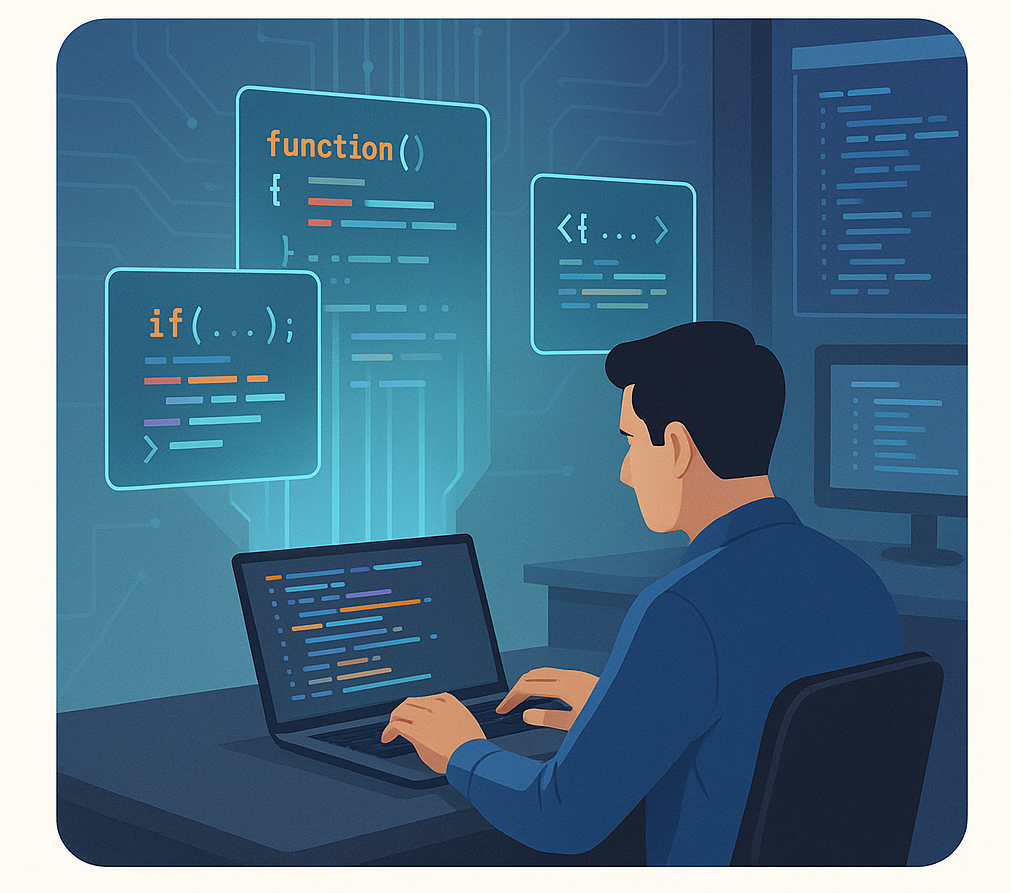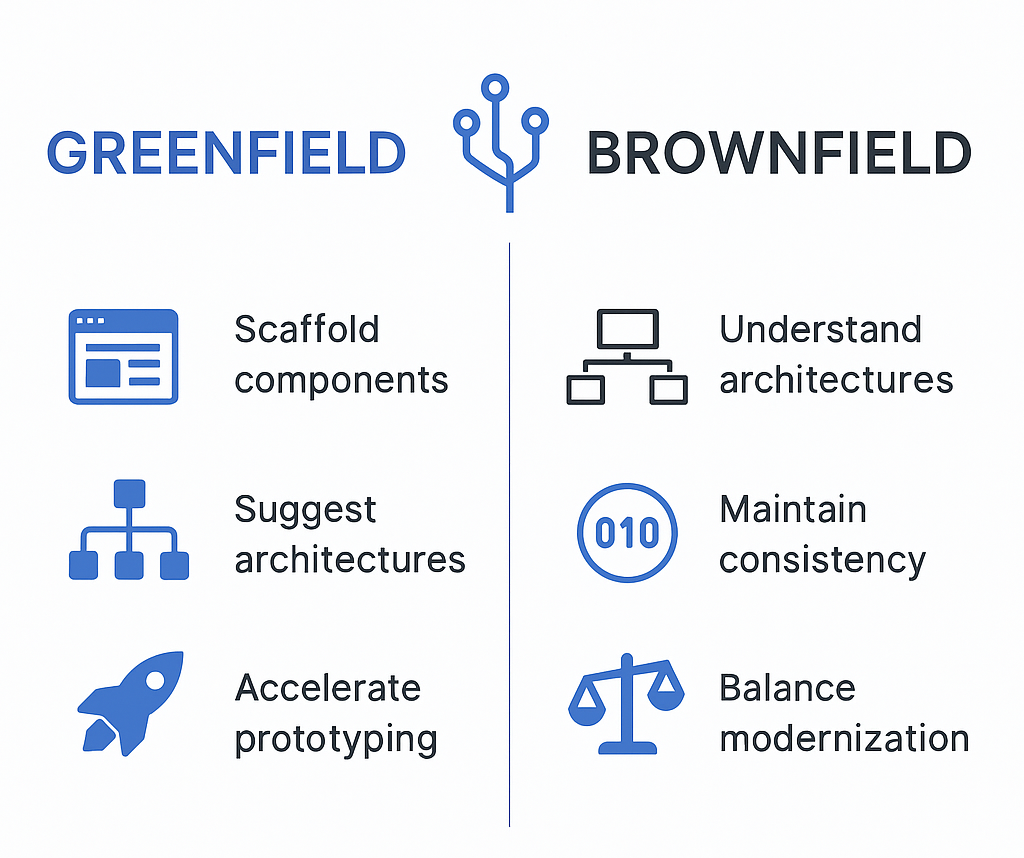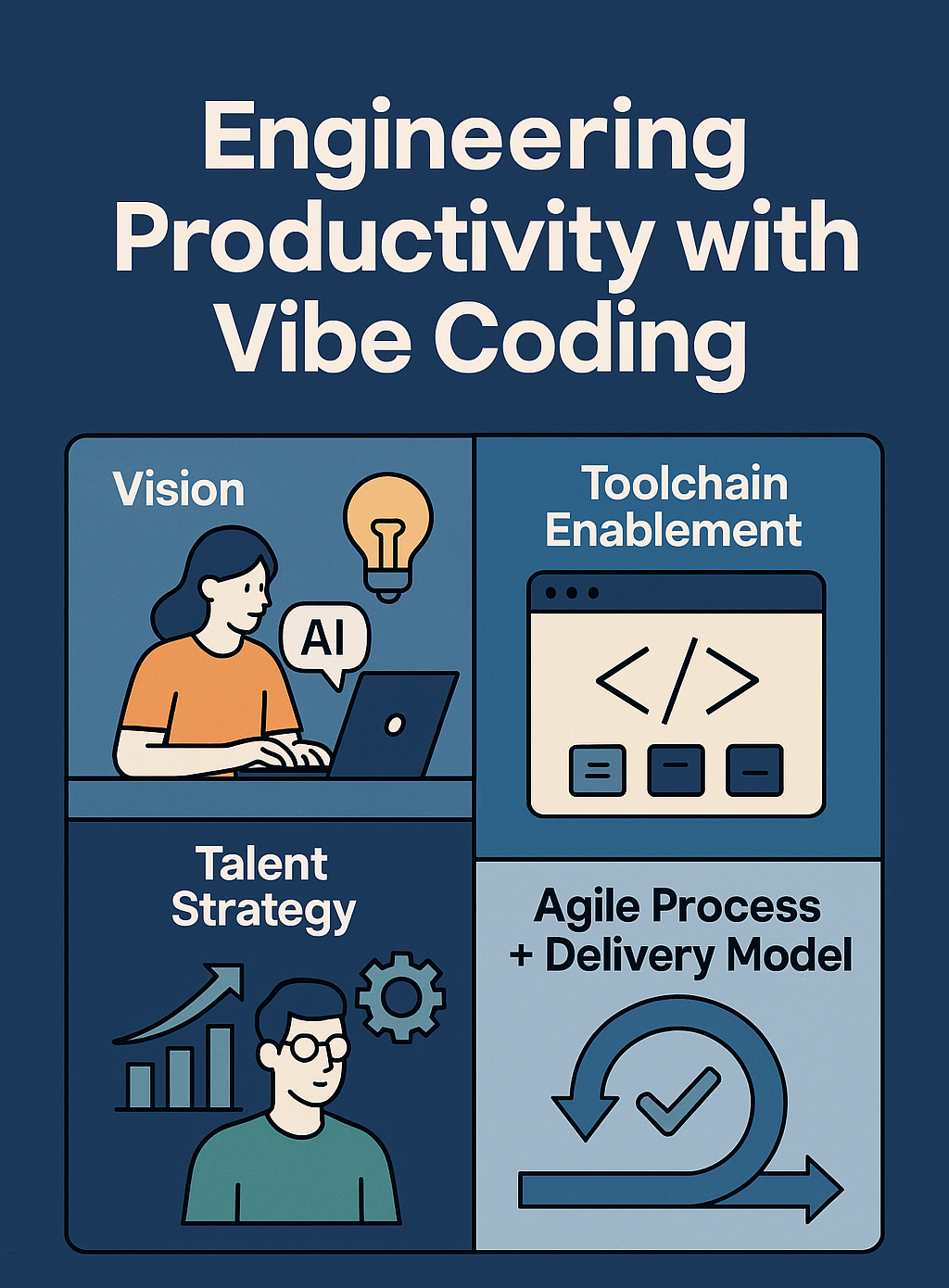Engineering Productivity with Vibe Coding: Reimagining the Software Delivery Playbook


AI Summary
- Engineering teams are hampered by manual processes, fragmented toolchains, and skill silos that slow delivery and erode software quality.
- Vibe Coding embeds AI into the workflow—leveraging AI-powered IDEs, automated testing, and prompt-driven code generation—to streamline scaffolding, validation, and collaboration.
- This AI-driven approach cuts coding cycles by 40–60%, shifts feature delivery from months to weeks, reduces defects, and empowers lean, high-performance teams.

In today’s hyper-competitive environment, engineering teams are under pressure to deliver more, faster, and with higher quality. Traditional development models, even when Agile, are often constrained by manual processes, fragmented toolchains, and skill silos.
Vibe coding changes that equation. By embedding AI directly into the developer workflow, it enables teams to achieve faster time to value, redefines engineering roles, and creates leaner, high-performance delivery models.
How Vibe Coding Enables Faster Time to Value
Vibe coding blends AI-powered development environments (AI IDEs), automated testing, and prompt-driven code generation into a seamless workflow. This transforms the engineering process in several ways:

- Accelerated Feature Delivery - AI-driven scaffolding, boilerplate generation, and automated test creation cut coding cycles by 40–60%.
- Quality Built-In - AI assists in real-time validation, reducing rework and post-release defects.
- Smarter Collaboration - Teams use shared AI-driven knowledge bases, ensuring consistency in patterns and architecture.
The result? What once took months can now be shipped in weeks, without sacrificing quality or maintainability.
Navigating the Code Jungle: AI IDEs in Greenfield vs. Brownfield Development
AI IDEs don’t perform the same way in every environment - the starting point matters.

In Greenfield development, AI tools operate in a “blank canvas” environment. With no legacy constraints, they can:
- Scaffold entire components in minutes.
- Suggest optimal architectures and coding patterns from the outset.
- Accelerate prototyping and feature delivery at an unprecedented pace.
In Brownfield projects, the challenge is different. AI must:
- Understand and adapt to existing architectures, dependencies, and code quality.
- Maintain consistency with historical patterns and business rules.
- Balance modernization with minimal disruption to production systems.
While Greenfield adoption often delivers immediate velocity gains, Brownfield modernization can unlock equally transformative results with the right context strategies - including fine-tuned prompts, project-specific AI training, and phased rollouts.
Key takeaway: Greenfield is where AI IDEs sprint, Brownfield is where they marathon - but both can win if the strategy is right.
The Strategy for Implementing Vibe Coding
Adopting Vibe coding is not just a tooling upgrade - it’s a strategic transformation. Success depends on a well-structured implementation approach:

1. Vision: Reimagining Engineering with AI-First Principles
- Shift from “people + tools” to “people + AI + optimized processes”.
- Embed AI as a collaborator, not a replacement.
- Redesign delivery KPIs to measure speed, quality, and adaptability.
2. Toolchain Enablement: Establish the Right Stack
- Choose AI IDEs (like Cursor, Windsurf, or GitHub Copilot) that integrate with your tech stack.
- Add AI-assisted testing and deployment automation to close the feedback loop.
- Ensure interoperability between design tools, code repositories, and CI/CD pipelines.
3. Talent Strategy: Redefine Roles & Upskill
- Developers become solution composers, focusing on logic, architecture, and business context.
- Testers evolve into automation strategists, designing test strategies powered by AI.
- Invest in prompt engineering, AI literacy, and domain-specific AI customization.
4. Agile Process + Delivery Model Transformation
- Shorter, more frequent sprints with AI-assisted backlog refinement.
- Leaner teams - often 25–40% smaller - with broader skill coverage.
- Agile ceremonies redesigned to incorporate AI-driven insights for prioritization and risk detection.
How Organizations Are Benefitting
Enterprises implementing Vibe coding are reporting
- 40-60% faster delivery cycles for new features.
- Up to 3x velocity in story points per sprint.
- Reduced resourcing footprint while maintaining or improving output.
- Higher code quality with AI-led validation, resulting in fewer production incidents.
Beyond numbers, it’s enabling a cultural shift -developers feel empowered to innovate instead of being bogged down byrepetitive coding tasks.
Pitfalls to Look Out For
While promising, Vibe coding adoption comes with watchouts:
- Over-reliance on AI - Without human review, AI-generated code can introduce subtle bugs or security vulnerabilities.
- Incomplete change management - Failing to align stakeholders, update processes, and setting new expectations can slow adoption.
- Tooling overload - Too many overlapping AI tools can create inefficiencies rather than solve them.
- Skill gaps - Without proper training, teams might underutilize the AI capabilities.
The Next Chapter in Engineering Productivity
Vibe coding is more than a productivity booster - it’s a new paradigm for engineering. When paired with a clear vision, the right tools, an empowered talent strategy, and evolved delivery models, it can unlock unprecedented speed, quality, and innovation.
But like any transformation, success depends on balanced adoption - where human creativity meets AI acceleration, and engineering shifts from “writing code” to designing intelligent solutions.
Ready to Transform Your Engineering Productivity?
Adopting AI IDEs and Vibe coding isn’t just about introducing new tools - it’s about orchestrating a full-scale change in how your engineering organization thinks, works, and delivers.
Whether you’re modernizing a complex legacy code base or launching AI-first delivery for new projects, we ensure your journey covers strategy, change management, and execution - with the right blend of speed, quality, and cultural adoption.
Check out our blog on Key KPIs to Measure Engineering Productivity for a practical framework you can apply alongside your Vibe coding strategy.

.png)


